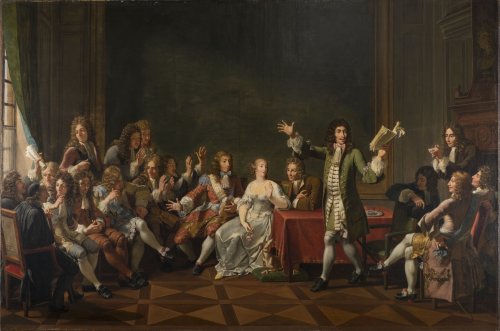Molière Reading Tartuffe at Ninon de Lenclos, painted by Nicolas Monciau, hangs in the library of the Comédie-Française, France’s national theatre. Tartuffe scandalised the pious on its first appearance, prompting the religious authorities to threaten with excommunication anyone who publicly performed it. The picture shows the author declaiming his play at the Rue des Tournelles, where Anne de Lenclos, (‘Ninon’, shown seated in the middle), held her salon.

But were Ninon and Molière friends? Did they ever even meet? The private reading of Tartuffe at her home is only one of the un-verified stories which attached themselves to Ninon’s name. Between her and Molière sits Charles de Saint-Evremond, certainly a life-long friend of hers but already an exile in London when Tartuffe was published. So why is he in this picture at all? And what might the profound friendship they cultivated have to teach us now?
Published by Erewhon Books
No Comments